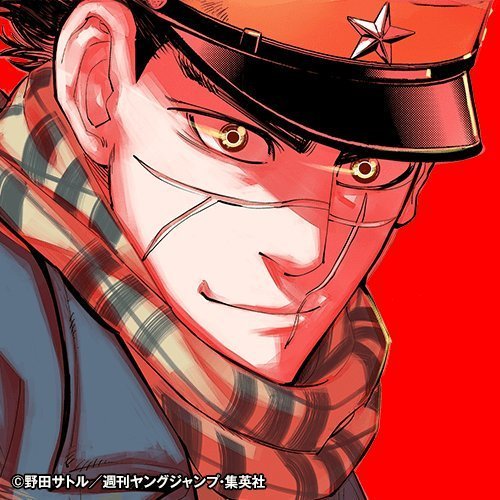Sugimoto Saichi was actually the name of Noda-sensei’s great-grandfather, but while Golden Kamuy’s protagonist’s surname is written as 杉元 , Noda-sensei’s great-grandfather’s is written as 杉本 (both are read the same, ‘Sugimoto’). Noda-sensei had wanted to write a manga about his great-grandfather, and chance arose when, after finishing Supinamarada!, he was asked whether he’d like to make a manga abut hunters in Hokkaido. He decided to make one with a young man who’s just come home from the Russo-Japanese war as the protagonist.
The following picture was taken from Noda Satoru’s blog post where he wrote about his great-grandfather. His name is on the second line from the right.
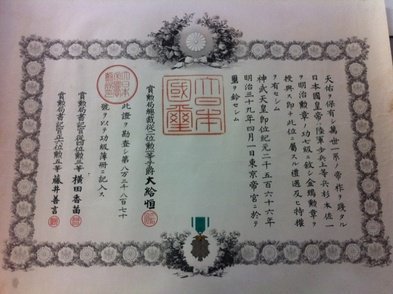
The real Sugimoto Saichi was a tondenhei (a soldier sent to Hokkaido not only to guard the island but also to develop it) from Kyushu. He was in the Cavalry Regiment 27, 7th division and went to the Russo-Japanese war. He was a hero, breaking through the siege by 2,000 Russian soldiers to call for reinforcements to help the outnumbered 500 Japanese soldiers. A bullet grazed his body, but he managed to break through and return with 4,000 soldiers. The Russians ran away, Sugimoto’s captain hugged the returning hero, and everybody in his battalion survived. For this act of bravery, Sugimoto Saichi was awarded The Order of the Golden Kite, and he received a nice pension until he died in his 60s of tuberculosis during World War II.
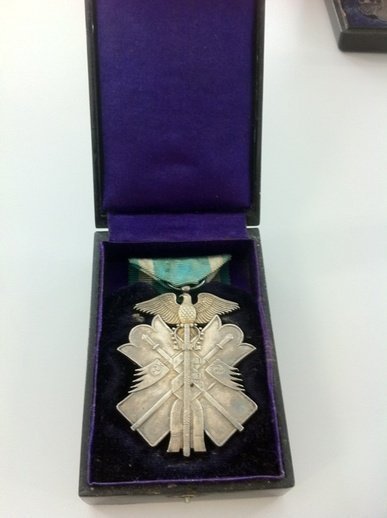
Noda-sensei said though that Golden Kamuy’s Sugimoto only borrowed his great-grandfather’s name. He thinks of them as two different people. You can see in this excerpt from volume 1 how Golden Kamuy’s Sugimoto has lead a different path of life from Noda-sensei’s great-grandfather…
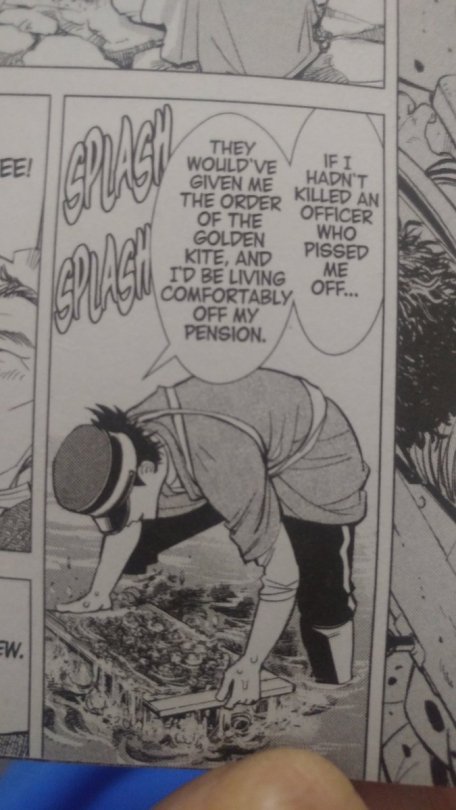
Now, in an interview, Golden Kamuy’s managing editor, Ookuma Hakkou, mentioned another model for Sugimoto: ‘Fujimi no Funasaka Hiroshi’ (October 30, 1920—February 11, 2006). Well, Funasaka was born too late to be involved in the Russo-Japanese war, but his life was truly an eventful one to merit being a model for a manga protagonist!
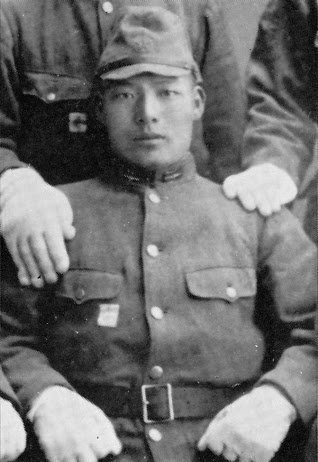
Ookuma mentioned how things in chapter 1 – Sugimoto getting shot in the neck and how he fought the Russians – did happen to Funasaka, although the enemy was different. Funasaka was born in Tochigi prefecture as the third son of a farmer. Beginning in 1939, he studied in a vocational school that prepared Japanese youth to become pioneers in Manchuria. In March 1941, he enlisted in the Army, and joined the 36th Troop of Utsunomiya.
He was said to be a good soldier, especially in using the bayonet (just like Sugimoto!). His legend as ‘fujimi’ (immortal) was born in the Battle of Angaur. At that time, he was badly wounded, so bad that the doctor that saw him just gave him a grenade to blow himself up when cornered and walked away. But Funasaka tied a Japanese flag around his leg to stop it from bleeding, crawled all night to return to the cave where the Japanese camped, and the next morning he already recovered enough to walk. He seemed to have a natural ability for quick recovery… Very much like Sugimoto, yes?
However, American soldiers closed up, in that desperate situation, Funasaka stabbed one American with a bayonet (like in this scene, although the enemy here was of course a Russian)—
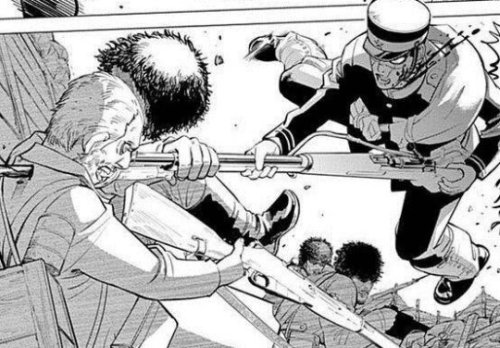
—then threw the bayonet at another American, which pierced the soldier’s jaw and killed him. Yes, something like this.
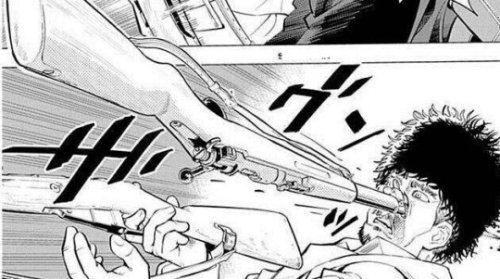
He kept on fighting like a demon, determined not wanting to die. He sustained so many wounds and burns, yet he stayed alive. He was taken prisoner by the Americans, and still tried to blow things up in prison, and only returned home to Japan in 1946. At that time, his family had been informed that he was dead, so imagine the surprise when their ‘immortal’ son came home.
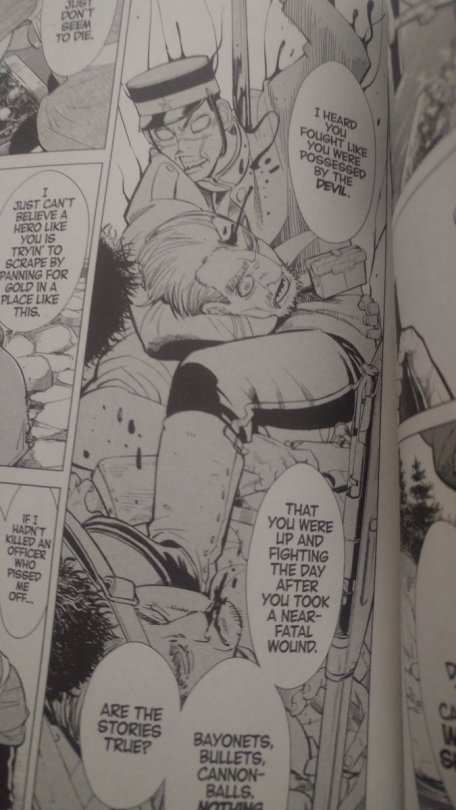
After that Funasaka lived what seemed to me a rich life, writing autobiography, running a bookstore, assisting local people in Palau Islands, etc. He’s also friends with the novelist Mishima Yukio, and the sword that Mishima used for seppuku was actually a gift from Funasaka.
Funasaka passed away in 2006 at the age of 85. And that’s the story of the two models for Sugimoto Saichi!
